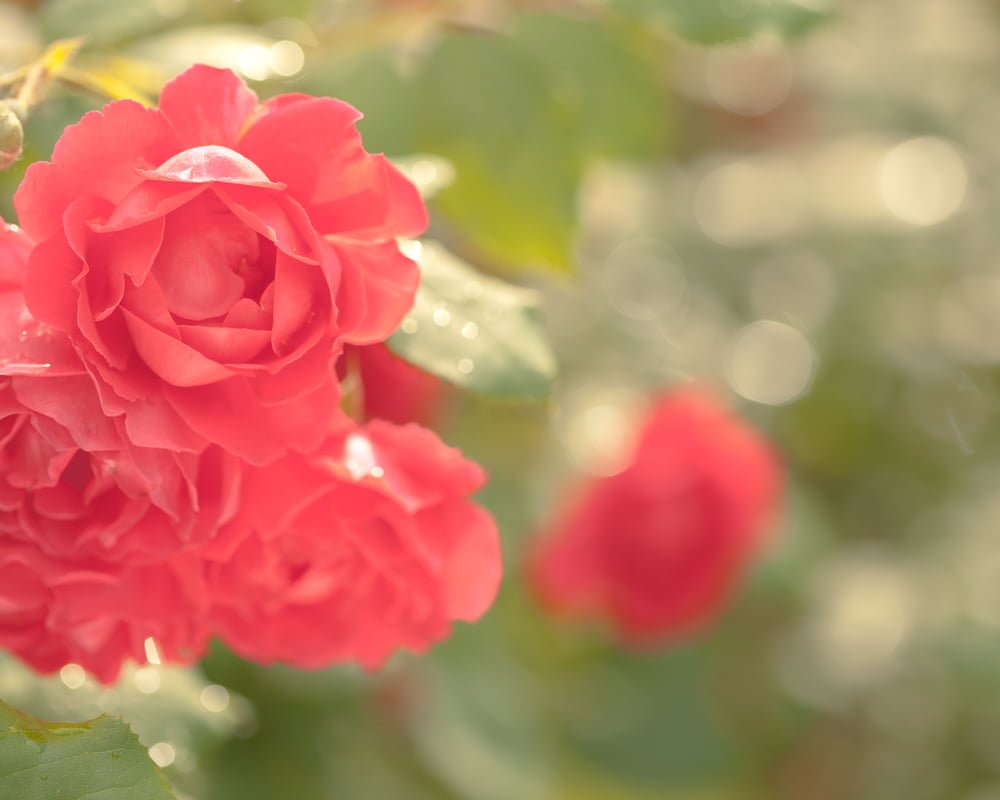
Planting rosebushes in northern Utah climates can pose several unique challenges. Although anyone can plant rosebushes, you need to attack this thorny process armed with the right plants and accessories, as well as some basic knowledge of the process. Following are step-by-step instructions for planting rosebushes, from the experts at the American Rose Society.
Step 1: Choose Bare Root or Container-Grown Roses
Even experienced gardeners may not know the difference between a bare-root rose and a container-grown specimen. A bare-root rose doesn’t have any leaves or flowers when you purchase and plant it, and is essentially in a dormant stage. This has distinct advantages because the plant can put all its energy into growing healthy roots. You do have to wait a season for them to bloom, however. These can be planted early, about six weeks before the average last frost date in your gardening zone. A rosebush that is container grown has full foliage and flowers. It presents a pretty picture as soon as you get it in the ground. These rose plants you see at your gardening center that come in one- or five-gallon containers need to be put out after the last frost.
Step 2: Choose an Appropriate Site
Before deciding where to plant your roses, you must consider several important factors.
- Select a site that will provide some direct sunlight as well as protection from winter’s worst conditions.
- Plant them close to a wall that can absorb the sun’s rays or by a fence that will help keep the plants protected from the worst cold.
- You also need good drainage if you want to grow healthy roses that bloom and thrive. You can always plant them in a raised bed as well, which automatically improves drainage.
- Next, you need soil with a proper texture and mix of nutrients. It shouldn’t be too sandy or too dense. You can improve its quality by adding compost or other rose-friendly soil amendments.
- Take care to never plant your roses too close to shrubs or trees. The plants will compete for nutrients and water, and you may end up losing both.
- Finally, check the pH balance of your soil and amend it if necessary. You can find kits at your local garden center, or have your soil tested at your local university extension. Ideally, the pH balance best for roses is between 6.5 and 7.
Step 3: Plant Your Roses
For a bare-root rose, dig a hole slightly bigger than the roots of the plant. Place the root into the hole so it is 1 to 2 inches below the soil line after you fill up the hole. Then add 2 or 3 gallons of water, pouring it in slowly. For container-grown plants, don’t water them for a day or so to let the moisture level go down. Next, dig a hole 1 ½ feet wide and 1 ½ feet deep. Place it carefully in the hole and fill it in. Water the plant, let the water seep in, then water again.
Tend your new rosebushes well and you will soon have beautiful blooms to brighten your garden. Visit Millcreek Gardens in Salt Lake City for the best quality bare-root and container-grown roses. Their experienced, helpful staff can recommend the right products to ensure that your plants will grow and thrive. Before you know it, your rosebushes will be the envy of the neighborhood.


